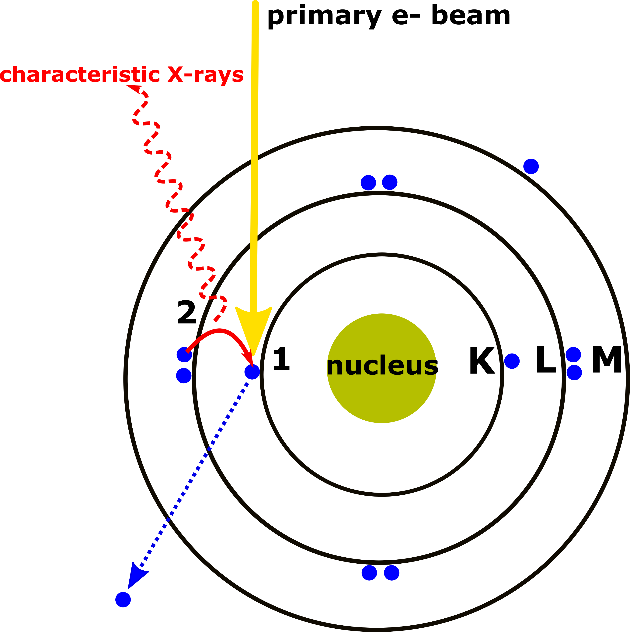From searching for food contaminants to identifying machine malfunctions to predicting how an aircraft part will corrode over time, energy-dispersive X-ray (EDX or EDS) analysis is a widely employed technique by today’s materials scientists. And used together with a scanning electron microscope (SEM), an EDX detector can generate more information about a sample than an SEM can alone.
EDX analysis how does it work?
Using EDX, researchers can quickly generate information about the chemical composition of a sample, including what elements are present as well as their distribution and concentration. But how exactly does EDX work?
With an SEM, a variety of signals offer up different information about a given sample. For example, backscattered electrons produce images with contrast that carry information about the differences in the atomic number, while secondary electrons produce topographic information about the sample. Yet when SEM is joined with an EDX detector, X-rays can also be used as a signal to produce chemical information.
To understand how these X-rays are generated, it’s important to consider that every atom has a unique number of electrons that reside in specific energy levels. Under normal conditions, these positions belong to certain shells, which have different, discrete energies.
X-rays generated by electron beam interaction
The way EDX analysis works is that the electron beam hits the inner shell of an atom, knocking off an electron from the shell, while leaving a positively charged electron hole. When the electron is displaced, it attracts another electron from an outer shell to fill the vacancy. As the electron moves from the outer higher-energy to the inner lower-energy shell of the atom, this energy difference can be released in the form of an X-ray. The energy of this X-ray is unique to the specific element and transition.

X-rays are generated using EDX following a two-step process. First, the energy transferred to the atomic electron knocks it off, leaving behind a hole. Second, its position is filled by another electron from a higher energy shell, and the characteristic X-ray is released.
The X-rays emitted during the process are collected by a silicon drift detector, which measures the signal and interprets it using software. In essence, the chemical information can be visualized in several ways including elemental mapping and line scans. In this way, X-rays can be used to identify each element that exists in a sample.
Utility of EDX analysis
Interestingly, EDX can be used for both qualitative and quantitative analysis, enabling users to identify both the type of elements that are present as well as the percentage of each element’s concentration within the sample. And as with traditional SEM, the technique requires little to no sample preparation and is non-destructive, meaning that it doesn’t damage the sample.
Because of its many advantages, EDX analysis has become common practice across industries ranging from manufacturing or research to energy and resource management to consumer-packaged goods. In fact, it’s so practical that it’s now an essential part of owning an SEM. Using an SEM to perform EDX analyses, researchers can improve production quality while saving valuable time—all using a very simple experiment.
Antonis Nanakoudis is an application and product development specialist for the Phenom Desktop SEM family of products at Thermo Fisher Scientific.


Dear Sir,
We have a requirement for Sem With EDX
Hello Naman,
Thanks for writing to us.
Could you please share your contact details so that we can connect with you?
With best regards,
Manoj Bansal
We have a requirement SEM with EDS
We’ve a requirement for sem with edx analysis
Hello, thank you for the explanation. Is it possible to site this page? For example a bibtex would help.